|
AMLO's New Government Promotes Preservation and Culture in Mexico
By Maria Curry
January/February 2019
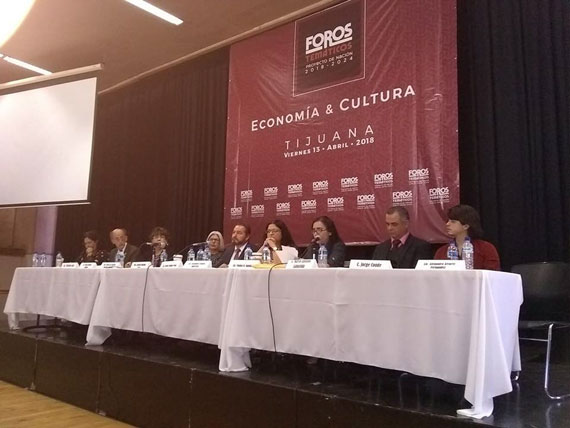 Panelists at the Forum on Economy and Culture at Tijuana's Centro Cultural, April 13, 2018. Courtesy of Vianka Santana |
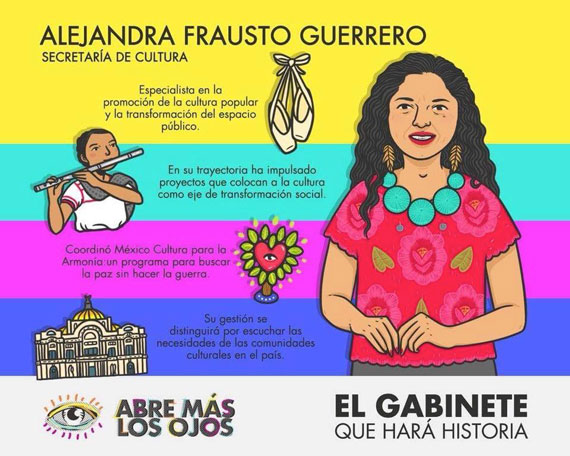 Poster for Forum on Economy and Culture, portraying Alejandra Frausto Guerrero, Mexico's new Secretary of Culture. Courtesy of Vianka Santana |
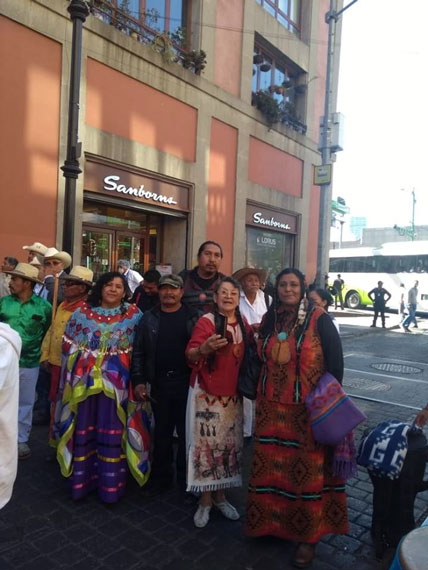 Group of Kumiais in downtown Mexico City. They represented Baja California at the cleansing ceremony for AMLO on Inauguration Day, December 1, 2018. Courtesy of Norma Meza Calles |
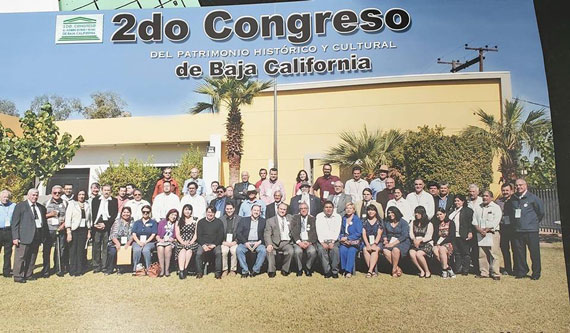 Group picture of 2nd Congress of Historic and Cultural Patrimony in Mexicali, November 2018. Courtesy of Maria Curry |
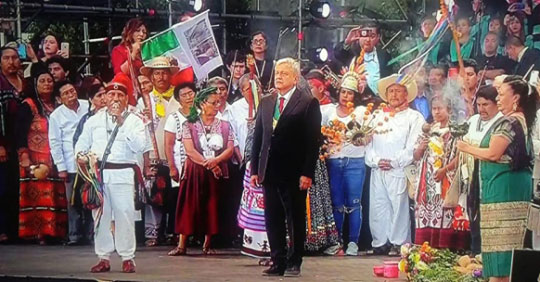 Cleansing and purification ceremony and the handing over of the staff of command from representatives of Mexico's 68 distinct indigenous peoples to AMLO on inauguration Day, December 1st 2018. Courtesy of Norma Meza Calles |
A new era began in Mexico with the election of the leftist president, Andrés Manuel López Obrador (AMLO), who has an attractive policy agenda that can benefit historic preservation. AMLO proposes to include indigenous groups in sustainable development programs and the preservation of Mexican culture and historic memory embodied in documents, archives, and buildings. He has recently encouraged participation through numerous public forums and conferences in Baja California and the rest of the country, where academics, activists and members of society have discussed many issues, including culture and historic preservation. AMLO's transition team or independent citizens organized these events.
On Inauguration Day, December 1, 2018, the new president took part in an indigenous cleansing and purication ceremony and was given a staff of command (bastón de mando) from representatives of Mexico's 68 distinct indigenous peoples. Norma Meza Calles represented the Kumiai nation of Baja California. In a moving and colorful ceremony at el zócalo, where Aztecs once lived in Mexico City, indigenous groups asked the new leader to listen to them, never again ignore them, and rule by respecting their communities. He was purified with medicinal plants while saluting the four cardinal points and accepted the indigenous people's wooden staff of command amid the sounds of ancient musical instruments.
AMLO was the first president to receive this distinction, traditionally given only to authorities of indigenous peoples when they assume leadership. The staff symbolizes that the recipient is called to serve his town, or, in this case, nation, with commitment, humility, and respect. Mexicans were astonished to see the new president show respect for their ancestors by accepting the staff on his knees, on a floor covered with flowers and bread.
The new Secretary of Culture Alejandra Frausto Guerrero has expressed the government's interest in preserving indigenous ways of life, languages, legends, and arts and crafts. Her office also wants to recover abandoned buildings and reuse them, following new policies of austerity and sustainability.
Preservation of the culture of migrants along the Mexico-U.S. border is another part of this vision, as the recent forum on migration and culture held at the Tijuana Centro Cultural proved. On December 2 I attended a meeting in San Diego with social activists who want to support the new president's cultural proposals through binational efforts. I offered to work on the preservation of migrants' cultural traditions. Representatives came from Oaxaca, Hidalgo, and Jalisco in Mexico, and from Peru and El Salvador. For example, La Guelaguetza, a traditional Oaxacan festival, is now celebrated in San Marcos, and the Day of the Dead is an important part of community life in San Diego and many parts of California.
One of AMLO's priorities is to create a passenger railway in the Yucatan peninsula to connect archeological Mayan sites and promote tourism. In a related effort, some of my students in the historic preservation course at Centro de Posgrado y Estudios Sor Juana in Tijuana are proposing to preserve and promote historic railroad stations in Baja California. (Read about this course HERE.)
Also high on the new federal government's list is urban development of marginalized neighborhoods in the border region. We need to identify who lives in these areas and whether they have cultural and historic resources that need to be studied and protected. Maru Encinas, another professor teaching the Centro's preservation course, is interested in this topic.
Beatriz Gonzales Muller, AMLO's wife, is a historian and a writer who refuses to be considered a first lady. She will lead the mammoth project Historic and Cultural Memory of Mexico, which aims to preserve and spread the country's traditions, character, and ethos, and to coordinate the efforts of federal agencies to make documents and information widely available. She intends to accomplish this by preserving all the public and private libraries and archives of Mexican history and creating a national digital platform for information storage, consultation, and sharing. Subjects range from musical treasures and gastronomy to literature and indigenous practices. The project's advisory council includes writers, historians, poets, actors, Mexico's UNESCO representative, and more.
This is a time of exhilaration for Mexico and we are very hopeful that the new federal policies and priorities will benefit historic preservation and cultural life in our border region.
|
2025
2024
2023
2022
2021
2020
2019
2018
2017
2016
2015
|








